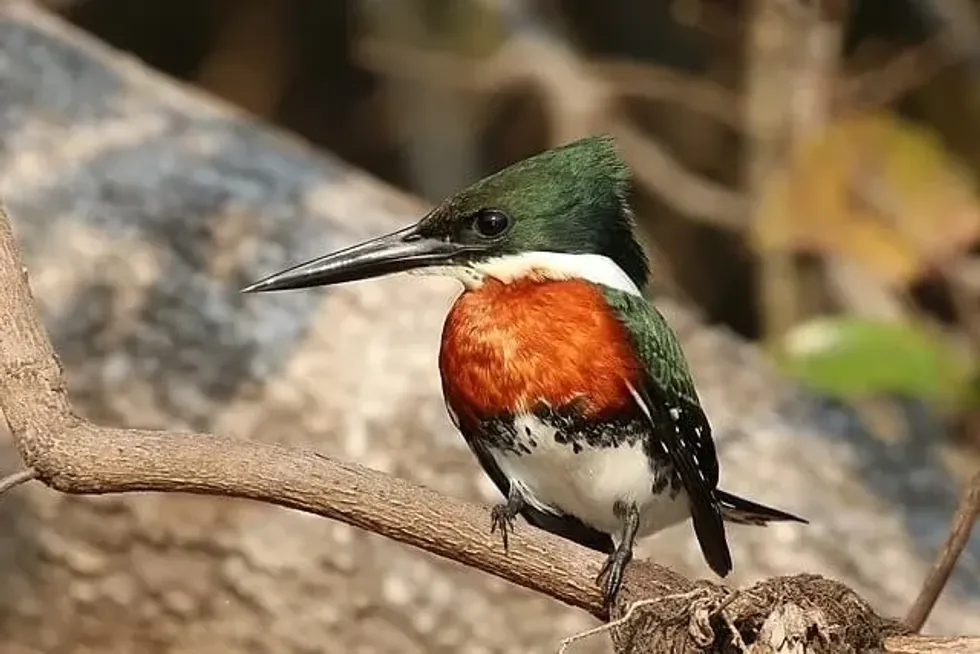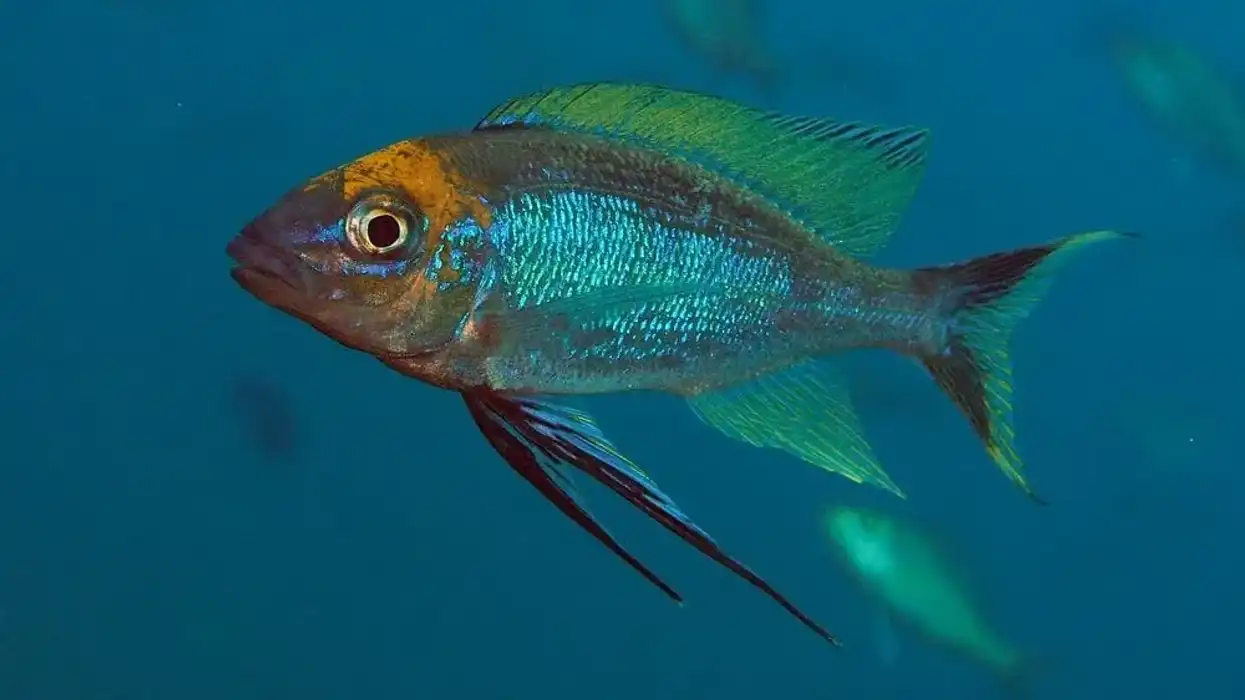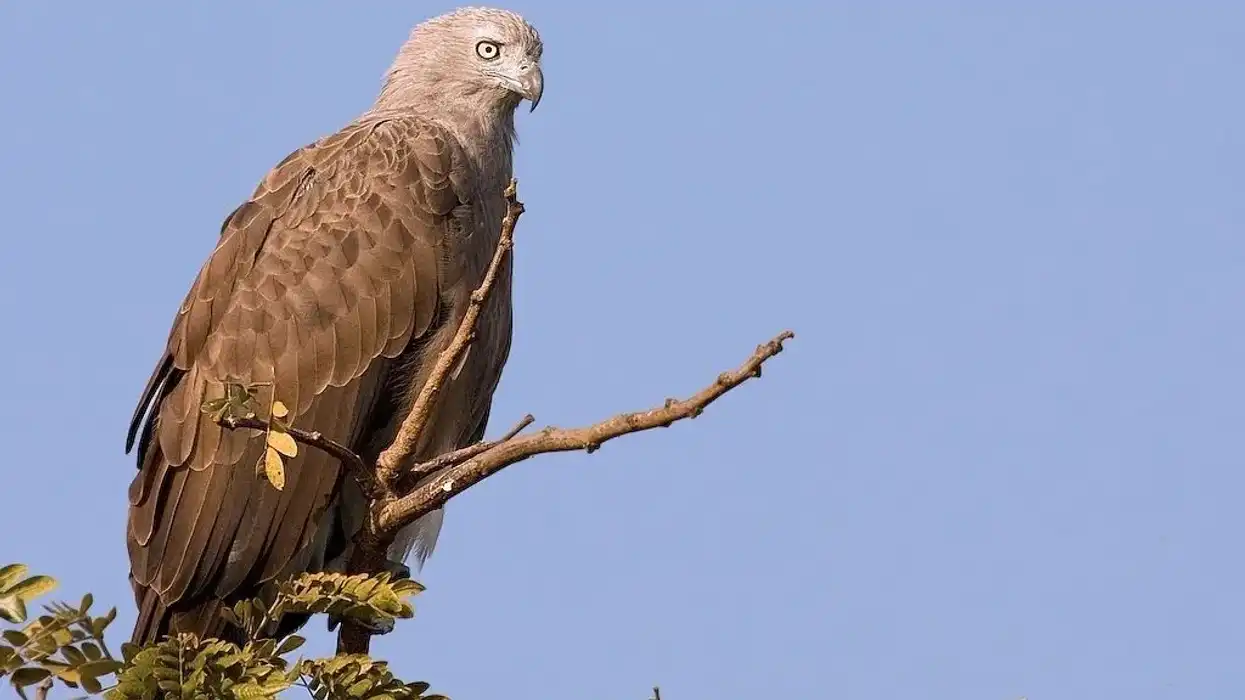The green kingfisher (Chloroceryle americana) belongs to the family Alcedinidae. This bird is found in the southern part of Texas in the United States.
It is found in certain parts of south and central America and also central parts of Argentina. The habitat of the green kingfisher consists of the river bank, deep rivers, woodland streams, lakes, marshes, forest pools, coastal lagoons, mangroves, coastal waters, and rocky watercourses. They generally inhabit open areas or regions.
The mating or breeding season is based on the range. The nesting, incubation, and feeding of the chicks are done by both parents and fledging happens around 27 days after hatching.
This small kingfisher is known to have colorful plumage. Adult males are known to have dark green colored upperparts.
They are also known to have a white-collar that divides the head and body. Under-tail coverts and flanks are known to be white in color and they have a long bill.
Females are known to look like adults, but are paler or duller and have white underparts and chest band or breast band of green color.
The bright rufous color on the breast and other parts of females is absent, unlike the males of this species, and the juveniles are similar looking to females. The tail is known to be usually kept or held up.
This kingfisher is known to perch on a low branch close to the water, rivers, or streams and similar kinds of habitat and is known to go head first into the water to catch small fish.
There have been five subspecies recognized and these subspecies are distributed in south-central USA, south-central or southern Texas, South America, Trinidad, and Tobago, and south Brazil.
It is quite fascinating to learn about the green kingfisher (Chloroceryle americana) and if you are interested, read about the Indian roller and the lilac-breasted roller too.
Green Kingfisher Interesting Facts
What type of animal is a green kingfisher?
The green kingfisher (Chloroceryle americana) is a species of bird.
What class of animal does a green kingfisher belong to?
It belongs to the class of Aves of birds.
How many green kingfishers are there in the world?
There is no exact count or number of the population of these birds that have been recorded or estimated.
Where does a green kingfisher live?
This bird is known to be a resident in southern Texas in the United States. It is also found in parts of South and Central America and also in central parts of Argentina.
What is a green kingfisher's habitat?
These birds are commonly found in various areas of water like deep rivers, woodland streams, lakes, marshes, forest pools, coastal lagoons, mangroves, coastal waters, and rocky watercourses. It generally inhabits open areas or regions. The elevation inhabited includes a sea level of up to 9186 ft (2800 m), but prefers elevations below 3281 ft (1000 m).
Who do green kingfishers live with?
The green kingfisher bird is known to be solitary, but can also be spotted in small groups. A group of green kingfishers is collectively referred to as a 'clique' or a 'concentration' of kingfishers.
How long does a green kingfisher live?
The life span of kingfishers is known to be around 15 years.
How do they reproduce?
The mating or breeding season depends on the range. The nest of this bird is placed in the ground near the streams of forests and mangroves.
It has been observed that both a male and female excavate or build the nest. The nest is known to be 2–2.4 in (5-6 cm) wide and 39 in (99 cm) long. The female is known to lay around four to five eggs and these eggs are white in color.
The incubation period lasts for about three weeks and is done by both males and females. Feeding is also done by both parents.
Fledging happens after about 27 days after hatching but is also known to be dependent on adults or parents for about four weeks after leaving the nest.
What is their conservation status?
This bird has been placed under the Least Concern category of conservation status.
Green Kingfisher Fun Facts
What do green kingfishers look like?
An adult male is known to have dark-green colored upperparts along with a glossy or shiny bronze-colored crown. The upper wings are known to be speckled or spotted with white on primaries, secondaries, and coverts of the wings.
Several lines are made by these spots. These birds are known to have a white collar that separates the body from the head.
The breast is known to be a bright rufous but some underparts, chin, and throat are white in color. The belly is also known to be white in color and also has green-blackish bars or stripes on the sides, under tail coverts, and flanks.
The bill is known to look like a dagger and is long and black in color with a yellow base.
The eyes of these birds are dark brown in color and lores are known to be black. The feet and legs are gray in color.
An adult female is known to look similar to males, but the bright rufous color is absent. The juvenile is known to have a similar appearance to females, but is paler or duller.

How cute are they?
These birds are considered cute because of their colorful plumage.
How do they communicate?
Just like other bird species, this bird is known to communicate using various sounds and calls to communicate with each other.
How fast can a green kingfisher move?
The exact speed of this species of kingfisher is unknown but its flight is known to be direct, fast, and close to the water.
How much does a green kingfisher weigh?
The weight of a male ranges from 1–1.4 oz (29–40 g) and that of female ranges from 1.2–1.9 oz (33–55 g). The average weight of this bird is around 1-1.9 oz (29-55 g).
What are the male and female names of the species?
There are no specific names for a male and female of this species.
What would you call a baby green kingfisher?
There is no particular name for a baby green kingfisher (Chloroceryle americana), but they are generally referred to as chicks, young ones, or juveniles.
What do they eat?
This bird is known to mainly feed on aquatic prey like small fishes, prawns, and crustaceans. The diet or food of this bird is also known to feed on aquatic insects and nymphs of dragonflies. They are also occasionally known to eat grasshoppers and small lizards.
Are they dangerous?
This kingfisher is not considered dangerous.
Would they make a good pet?
In general, it is believed that kingfishers do not make great pets as these are wild birds. Most of the species of this bird are known to not be friendly and in many places, it is considered illegal to own kingfishers as pets.
Did you know...
The first description of this bird was done by a German naturalist, entomologist, and botanist Johann Friedrich Gmelin in 1788. The initial binomial name of this kingfisher was Alcedo america.
There have been five subspecies recognized of this bird Chloroceryle americana hachisukai, Septentrionalis, Americana, Mathewsii, and Cabanisii.
The birds found in Trinidad and Tobago are known to have a heavier and larger bill.
It is known to be a sister species to the green and rufous kingfisher.
This species is known to be smaller than the other species of kingfishers and also the bluish-gray is absent.
Even though certain species of kingfishers are known to be native to New Zealand, some are rare in New Zealand.
Todies, bee-eaters, and motmots are known to look similar to kingfishers.
The season in which the green kingfishers can be spotted depends on the range.
What is special about kingfisher birds?
It is believed that kingfishers have a quite wide base of prey. They are known to generally feed on small fish and are known to be great at catching fish. Other prey consists of crustaceans, amphibians like frogs, mollusks, spiders, insects, reptiles, centipedes, mammals, and birds.
How many species of kingfisher are there?
These birds are known to have about 90 species and these 90 species have been divided into three families, namely Alcedinidae, Cerylidae, and Halcyonidae. The population of these birds is distributed worldwide. Some species of kingfishers include blue-eared, common, pied, crested, ruddy, oriental dwarf, amd white-throated kingfisher.
Here at Kidadl, we have carefully created lots of interesting family-friendly animal facts for everyone to discover! Learn more about some other birds from our giant cowbird facts and cerulean warbler facts pages.
You can even occupy yourself at home by coloring in one of our free printable kingfisher coloring pages.










